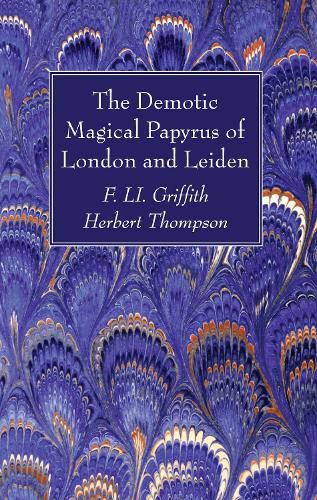Readings Newsletter
Become a Readings Member to make your shopping experience even easier.
Sign in or sign up for free!
You’re not far away from qualifying for FREE standard shipping within Australia
You’ve qualified for FREE standard shipping within Australia
The cart is loading…






This title is printed to order. This book may have been self-published. If so, we cannot guarantee the quality of the content. In the main most books will have gone through the editing process however some may not. We therefore suggest that you be aware of this before ordering this book. If in doubt check either the author or publisher’s details as we are unable to accept any returns unless they are faulty. Please contact us if you have any questions.
How to invoke Anubis and release the dead … how to divine with a lamp … how to conjure up a damned spirit … how to have dream visions … how to make magic ointments … how to blind or kill your enemies … how to use the charm of the ring … how to invoke Thoth and bring good fortune … These are among the many topics of practical magic contained in the so-called Leyden Papyrus, an ancient Egyptian manuscript that dates from around the beginning of the Christian era. Probably the textbook of a practicing sorcerer in Egypt, this remarkable work containing scores of spells which the writer firmly believes will work: sex magic of various sorts, occult information, evoking visions, working evil, healing, removing evil magic–and all the other tasks that a sorcerer might have to undertake. Discovered at Thebes in the middle of the 19th century, assembled from fragments at Leiden and London, this fifteen-foot strip of papyrus is still one of the most important documents for revealing the potions, spells, incantations, and other forms of magic worked in Egypt. In addition to purely native elements involving the gods, the manuscript shows the influence of Gnostic beliefs, Greek magic, and other magical traditions. A transliteration of the demotic script is printed on facing pages with a complete translation, which is copiously supplied with explanatory footnotes. The editors supply an informative introduction and a classification of the types of magic involved. As a result, this publication is of great importance to the Egyptologist, student of magic, and the reader who wishes to judge the efficacy of Egyptian magic for himself.
$9.00 standard shipping within Australia
FREE standard shipping within Australia for orders over $100.00
Express & International shipping calculated at checkout
This title is printed to order. This book may have been self-published. If so, we cannot guarantee the quality of the content. In the main most books will have gone through the editing process however some may not. We therefore suggest that you be aware of this before ordering this book. If in doubt check either the author or publisher’s details as we are unable to accept any returns unless they are faulty. Please contact us if you have any questions.
How to invoke Anubis and release the dead … how to divine with a lamp … how to conjure up a damned spirit … how to have dream visions … how to make magic ointments … how to blind or kill your enemies … how to use the charm of the ring … how to invoke Thoth and bring good fortune … These are among the many topics of practical magic contained in the so-called Leyden Papyrus, an ancient Egyptian manuscript that dates from around the beginning of the Christian era. Probably the textbook of a practicing sorcerer in Egypt, this remarkable work containing scores of spells which the writer firmly believes will work: sex magic of various sorts, occult information, evoking visions, working evil, healing, removing evil magic–and all the other tasks that a sorcerer might have to undertake. Discovered at Thebes in the middle of the 19th century, assembled from fragments at Leiden and London, this fifteen-foot strip of papyrus is still one of the most important documents for revealing the potions, spells, incantations, and other forms of magic worked in Egypt. In addition to purely native elements involving the gods, the manuscript shows the influence of Gnostic beliefs, Greek magic, and other magical traditions. A transliteration of the demotic script is printed on facing pages with a complete translation, which is copiously supplied with explanatory footnotes. The editors supply an informative introduction and a classification of the types of magic involved. As a result, this publication is of great importance to the Egyptologist, student of magic, and the reader who wishes to judge the efficacy of Egyptian magic for himself.